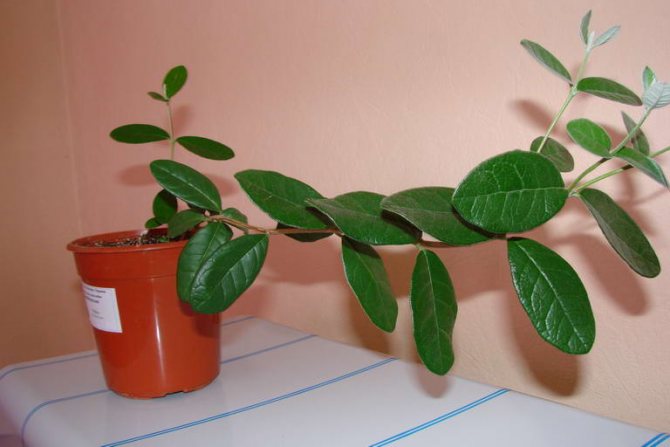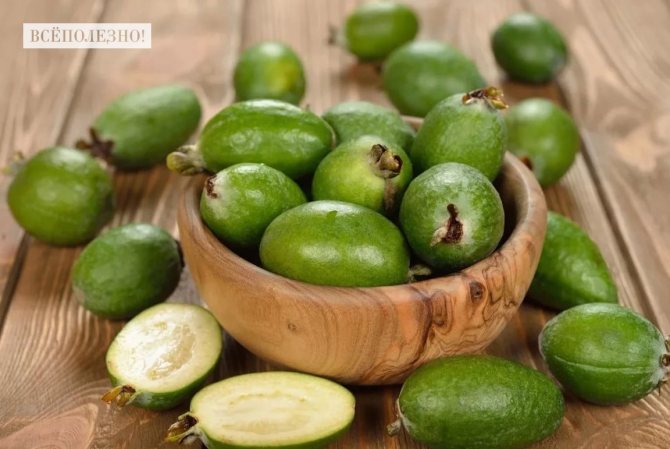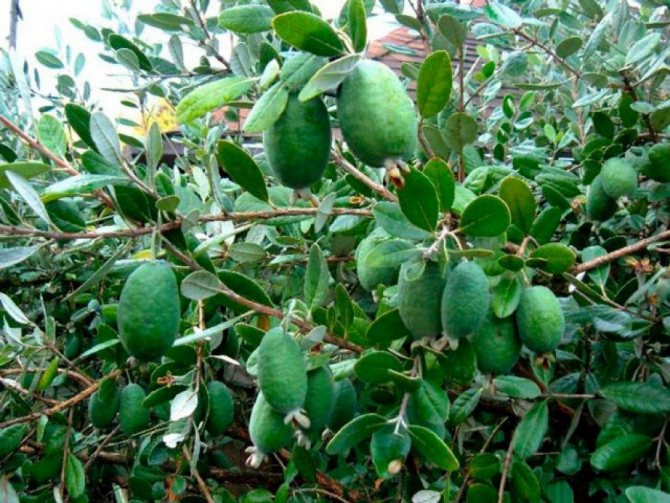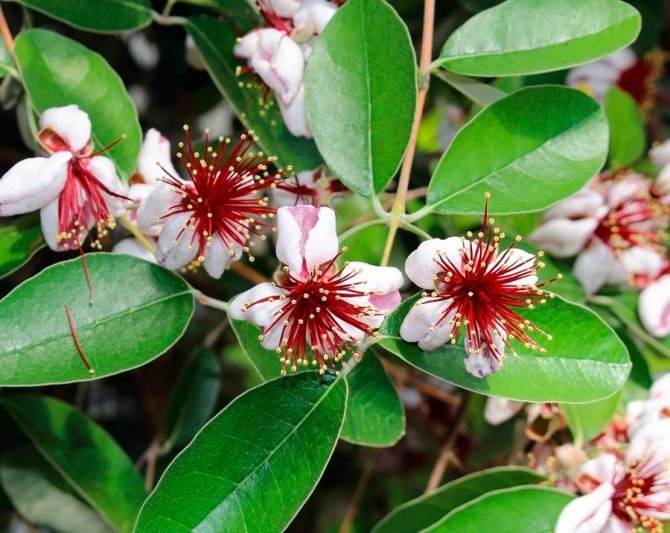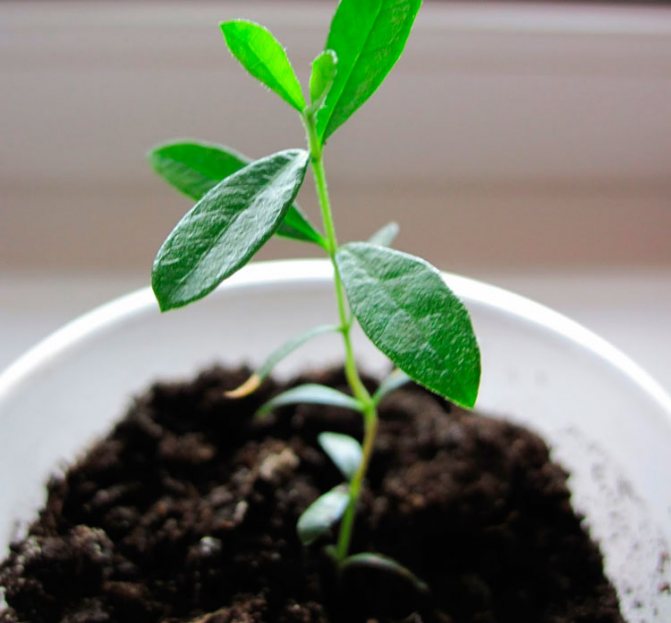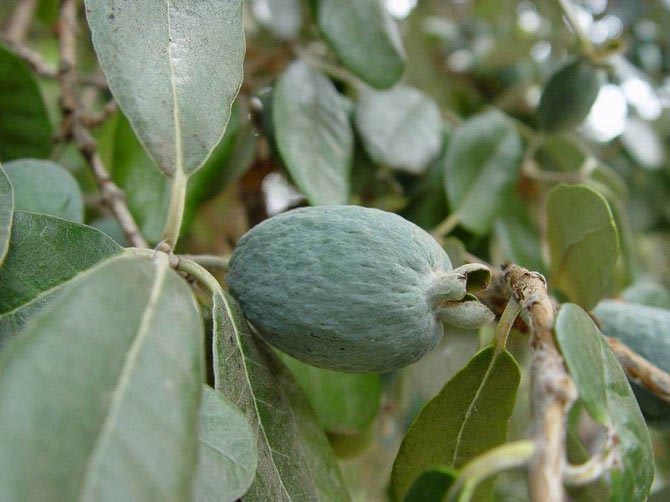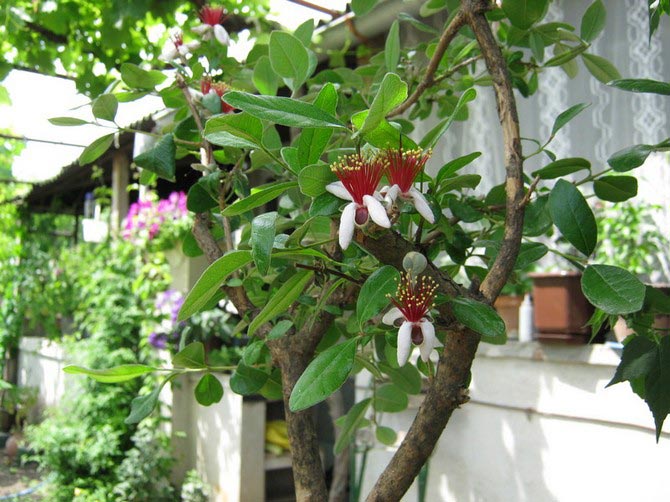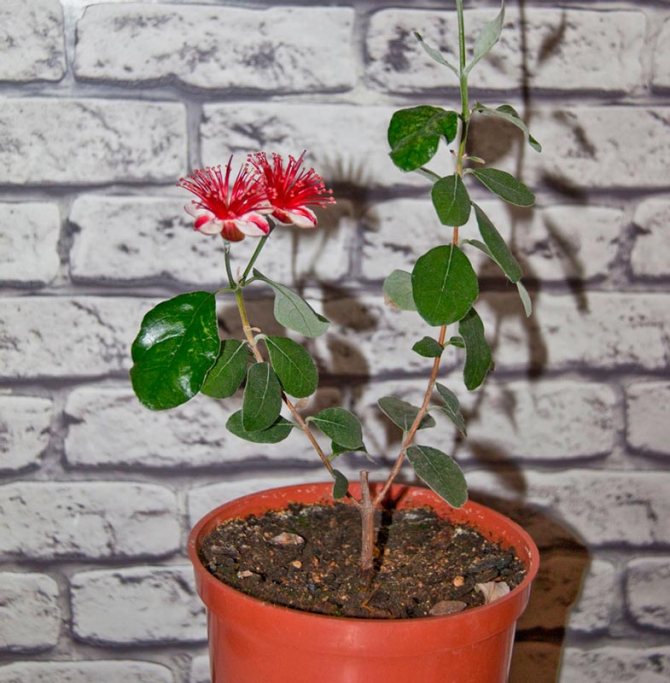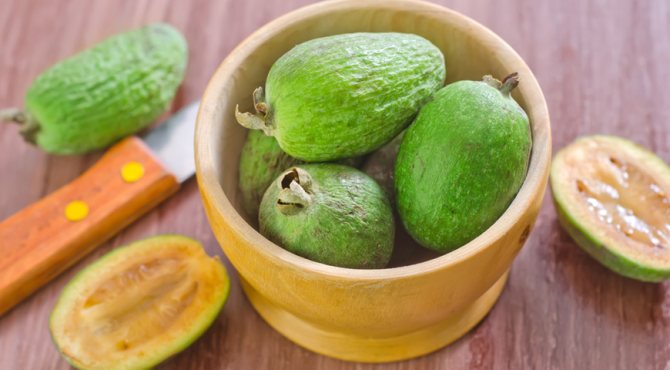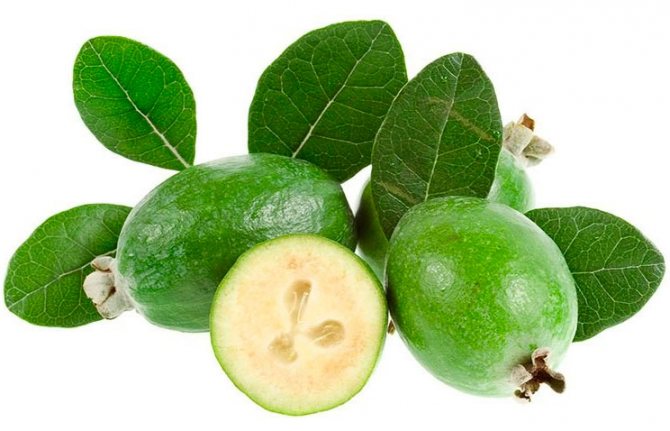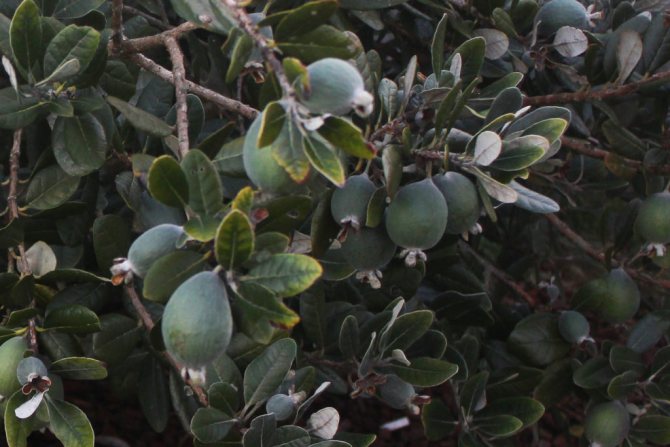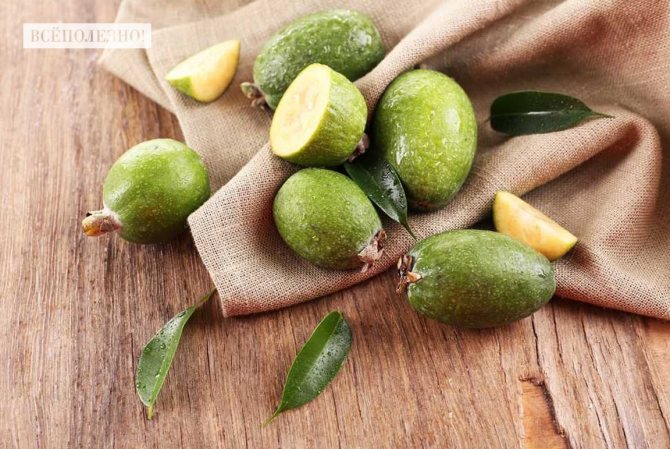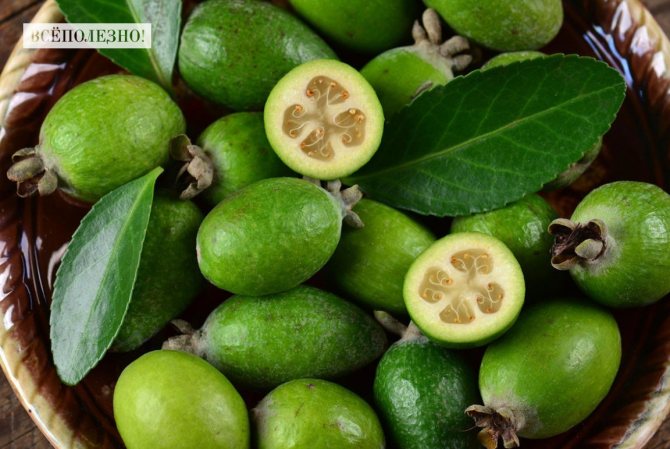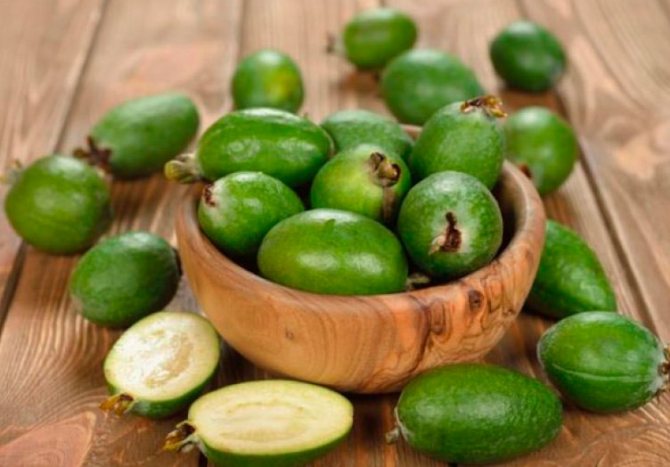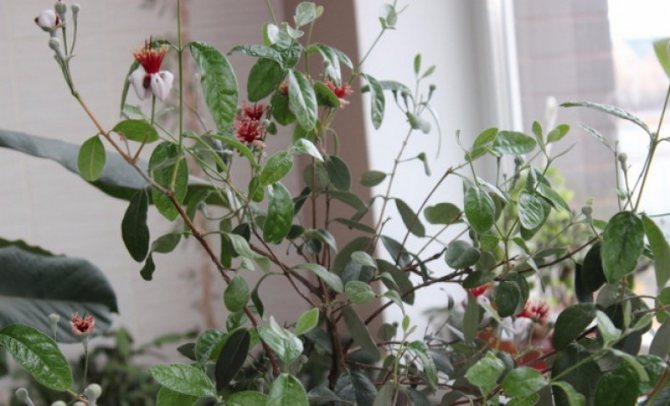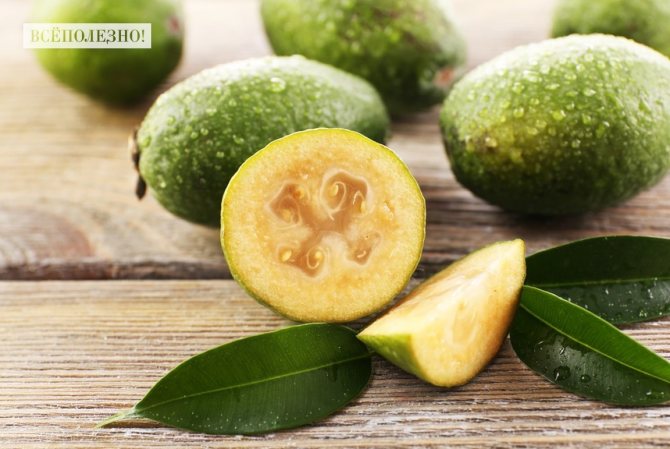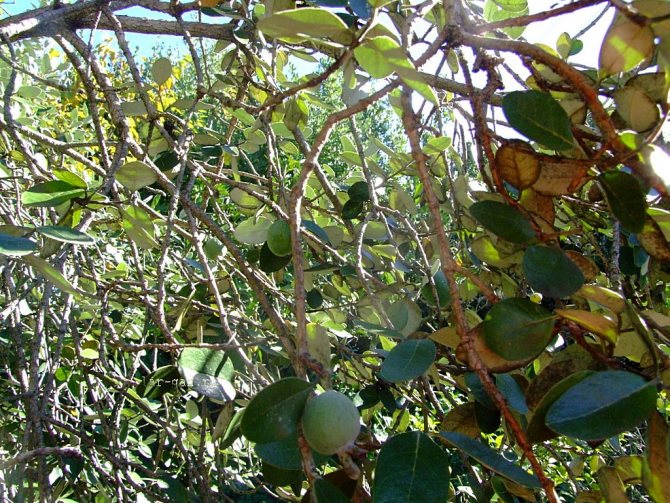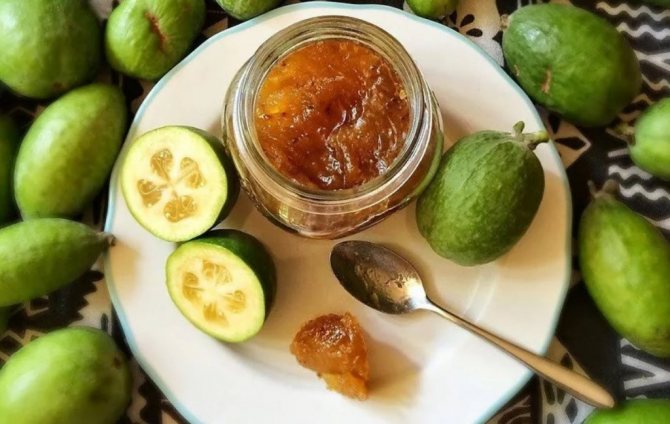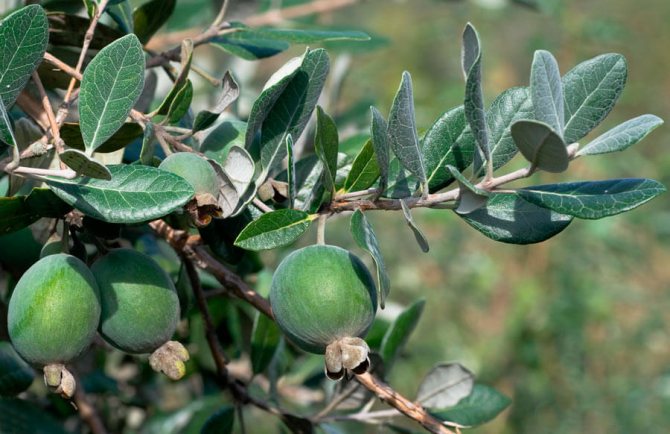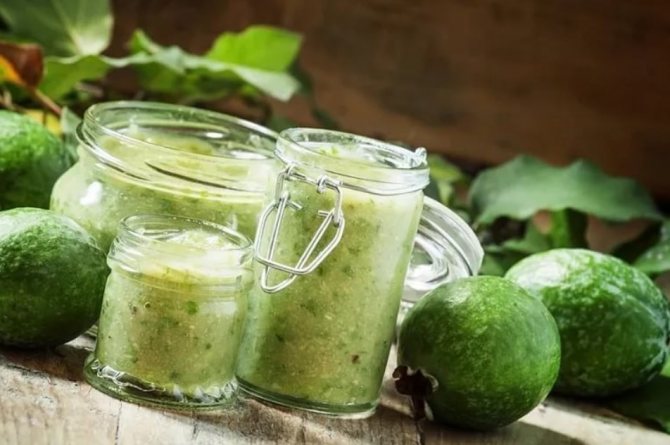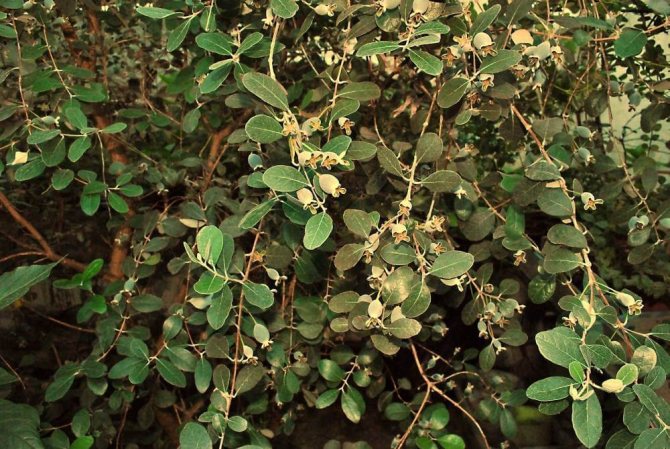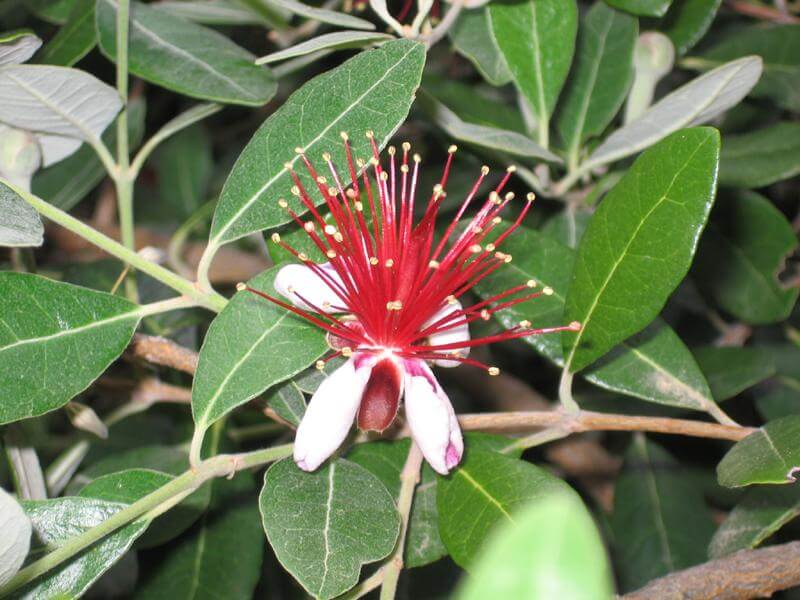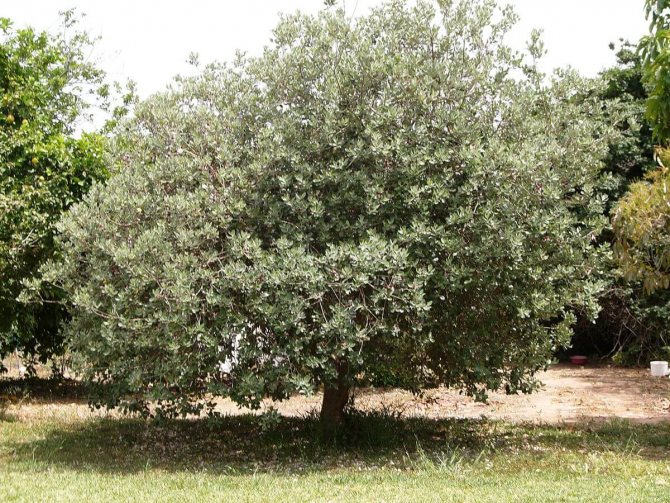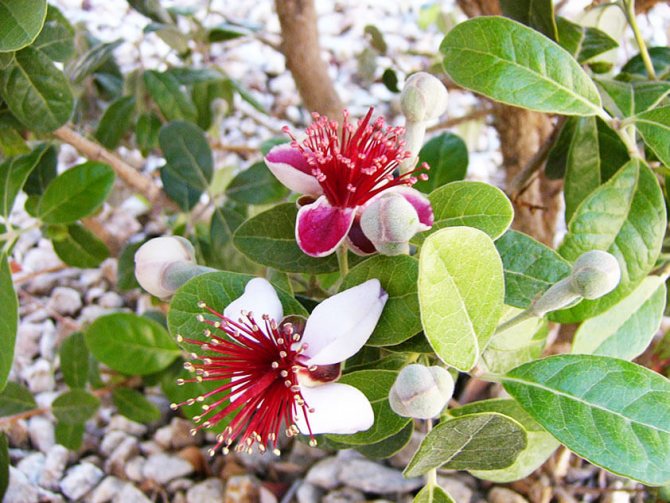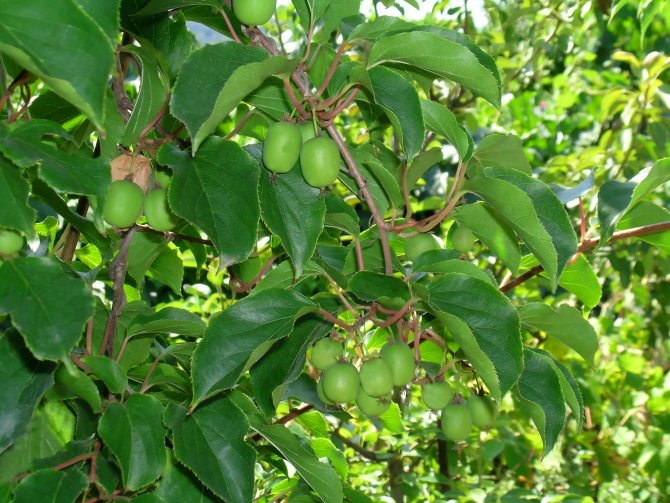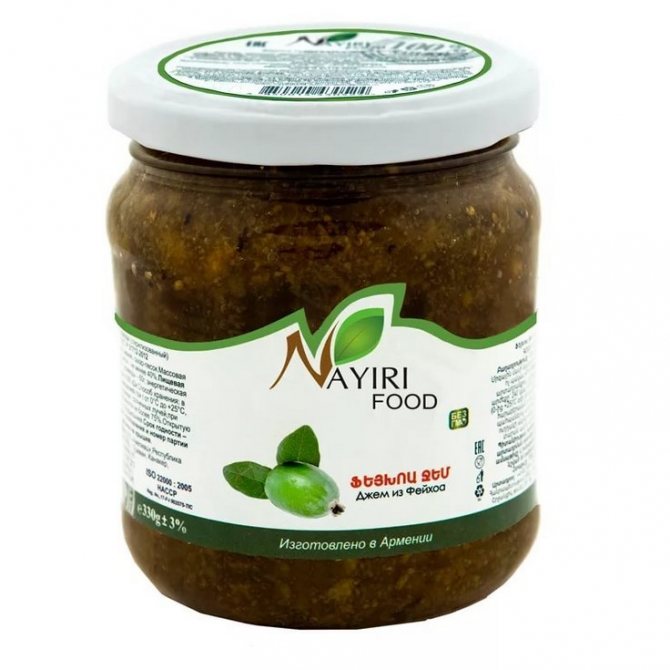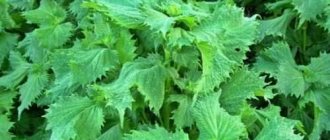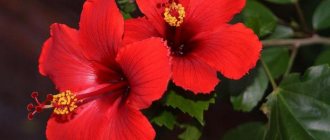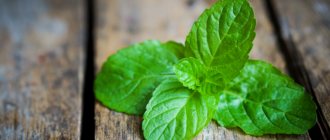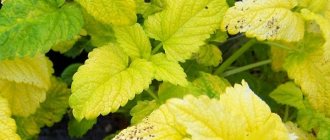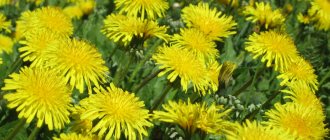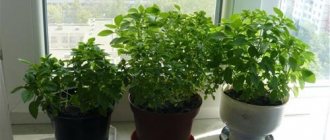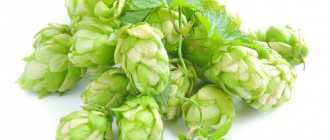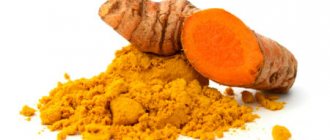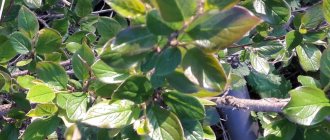The feijoa plant (Acca sellowiana), also called akka feijoa, or akka sellova, is represented by not very tall trees and evergreen shrubs, it is a species of the genus Akka of the Myrtle family. Some experts distinguish feijoa into a separate genus. This species was named after the Portuguese naturalist João da Silva Feijo, it was he who found this plant in Brazil at the end of the 19th century. The specific epithet was given to this plant in honor of the German naturalist Friedrich Sellow, who studied the Brazilian flora. In natural conditions, feijoa can be found in Colombia, Brazil, Uruguay and northern Argentina. Feijoa in nature is found only in the subtropics, while in the tropics they grow extremely poorly. On the territory of Europe, such a plant appeared only in 1980.Today, this plant is cultivated not only in South America, but also in the Crimea, Abkhazia, Georgia, Armenia, Azerbaijan, Dagestan, Krasnodar Territory of the Russian Federation, Australia, New Zealand, Italy, France, Greece, Portugal, Spain and the Pacific coast of the United States and the Caucasus.
Interesting Facts. A bit of prehistory
In the middle of the 18th century, a boy named Joao da Silva Barbosa lived in the capital of Brazil. He was very fond of nature and grew up inquisitive, read books, encyclopedias. For hours I watched life in the anthill, woke up at sunrise to watch the flowers bloom. I often walked with friends and told them about everything in the world: why moss grows on trees on the north side, why berries can be poisonous, how to distinguish birds by voice. After university, taking the new surname Feijo, he was one of the participants in the creation of the Museum of Natural History in Lisbon. All his life, João devoted to the study of the flora of the Cape Verde Islands, Portugal and Brazil, wrote books on geography, toponymy and botany. Subsequently, a hundred years later, botanist Carl Otto Berg discovered a new fruit tree in Portugal and named it Feijoa after Silva Feijo.
Feijoa is a fruit or a berry
Often, lovers of exotic fruits ask questions: what is feijoa, where does the fruit grow? Where did this wonderful plant come from? The birthplace of fertile flowering plants of the Myrtle family are:
- South America;
- Colombia;
- Argentina;
- Uruguay;
- Paraguay.
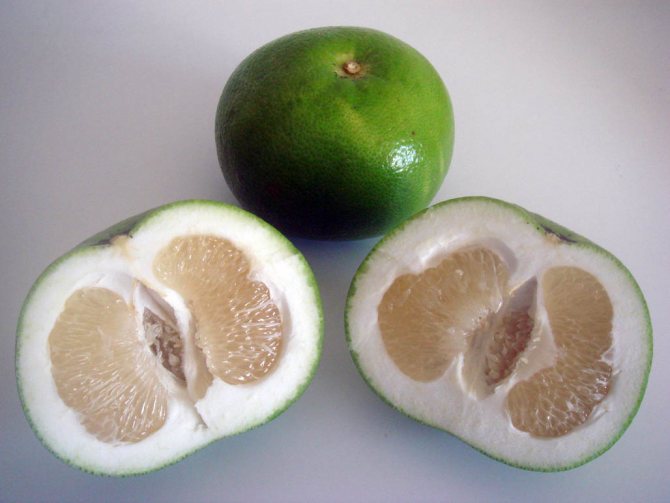
Exotic fruit
Today the agronomists of Azerbaijan, Australia, the Caucasus, western Georgia are successfully growing a fruitful flowering plant on their plantations. Recently, the shrub has been grown in Russia (RF).
What is feijoa - berry or fruit? It is an exotic fruit that belongs to the fruit category.
Feijoa is a fruit that will impress even the most sophisticated gourmet in the world. The shape of the fruit resembles the shape of an egg. The fruits are colored green. The pulp is characterized by increased juiciness, aroma and sweetish taste. Feijoa tastes like apple, mint, fig and pineapple. Many believe that it looks like a pineapple. The granularity of the transparent jelly-like pulp vaguely resembles a guava.
What does a feijoa look like? The peel of the exotic fruit is firm and has a tart flavor. The pulp contains a small amount of seeds. The fruit can be eaten completely without removing the skin.
Note! Most often, lovers of exotic fruits choose only the pulp, not suspecting that it is in the skin that the main percentage of useful elements is contained. Some housewives dry the peel in the fresh air and add it to tea with grated ginger in winter.
How does feijoa bloom? The feijoa bloom season lasts almost 60 days. During this period, the plant becomes a real decoration of the apartment / garden. The bright feijoa flowers are endowed with an amazing aroma. The ripening period of the fruits falls on the 20th of October. During the ripening season of feijoa, you can remove the fruit from the tree and eat it right away.
Where does feijoa grow?
Feijoa is home to the subtropical regions of South America: Paraguay, Southern Brazil, Uruguay and Northern Argentina.
As an undergrowth, this tree grows in the wild forests of South America. Feijoa is a subtropical plant and all opportunities to plant it in tropical areas have been unsuccessful.
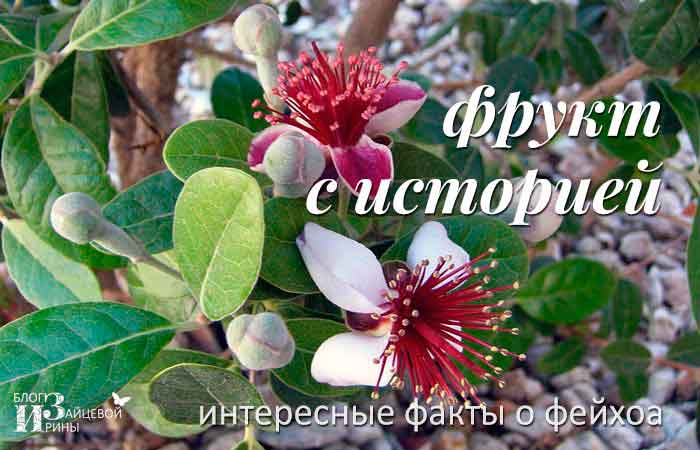

By the end of the 19th century, feijoa was brought to France, then in 1900 to Sukhumi and Yalta, and at the beginning of the 20th century to California, where this exotic fruit spread well. In 1913, the fruit tree was brought to Italy and the entire Mediterranean. This plant of the subtropical strip has also conquered more northern regions. On the Crimean peninsula, a fruit tree can withstand frosts down to -11C without damage.
Currently, feijoa is grown mainly on personal plots in Azerbaijan, Georgia and the Krasnodar Territory.
Feijoa is very popular among amateur flower growers who grow it like an exotic tree in indoor conditions.
Feijoa is often used as a decorative plant due to its beautiful flowers and leaves with a silvery color. In some hot countries, parks and squares are still decorated with feijoa fruit trees.
What is
Feijoa is biologically considered a berry, but most often it is called a fruit. It has an elongated oval shape and a diameter of no more than 5 cm. The average weight is 30-40 g. The berry is covered with a thick green skin, which reliably hides the flesh of a light color. Inside are edible seeds, which are located in a juicy jelly-like mass. Feijoa tastes and smells like pineapple, kiwi and strawberries.
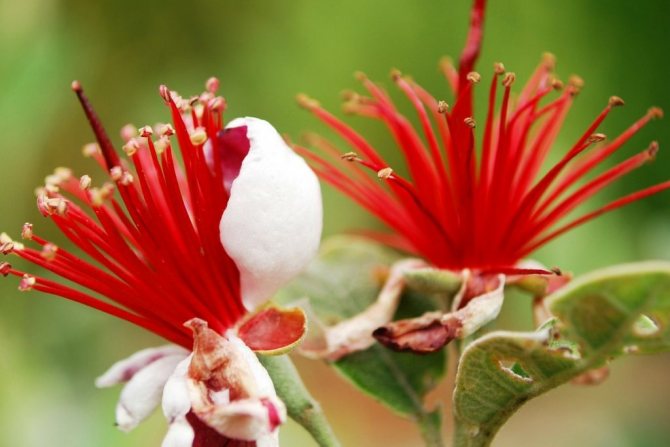

In which regions does it grow
The plant with yellow-pink flowers feels comfortable in subtropical and tropical climates. His homeland is South America, where feijoa is called Quechua. According to an ancient legend, this fruit went to the Indians as a gift from the gods. Now the plant is actively cultivated in many countries of the world:
- Greece;
- Spain;
- New Zealand;
- Portugal;
- Chile;
- Bolivia;
- USA (state of California);
- Colombia.
The tree begins to bloom in the spring, and bear fruit six months after the completion of this process, that is, in late autumn or early winter.
Feijoa. Photo
This is what the feijoa berries themselves look like, which we can buy in the market or in the store.
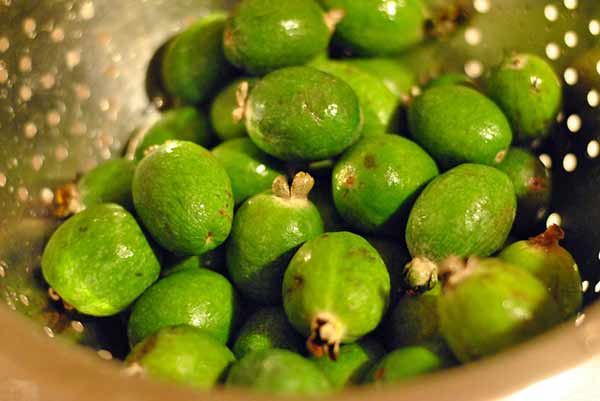

And this is what the feijoa tree looks like. The photos were sent to me by Viktor Bessonov, a regular reader of my blog and the author of several very interesting articles. Victor grew feijoa first at home in a flower pot.
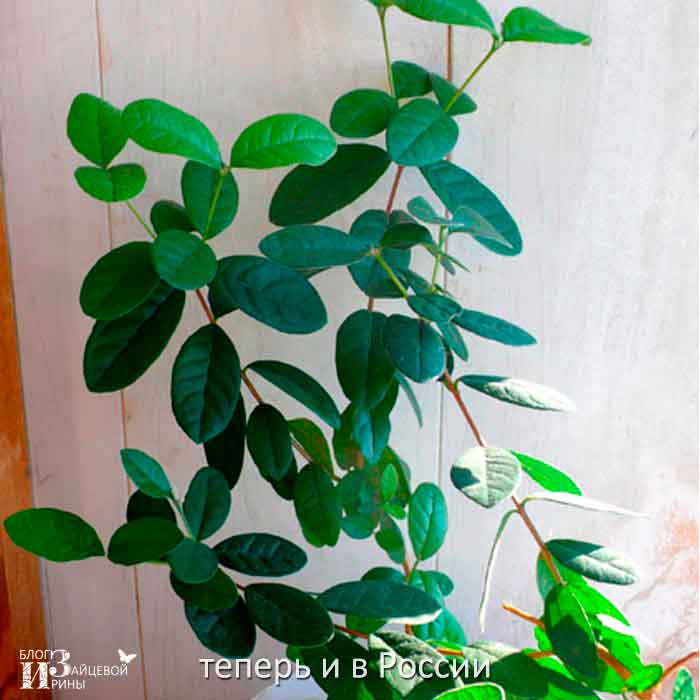

And here is what this tree looks like (still very small so far) in its summer cottage. Victor himself lives in Rostov-on-Don.
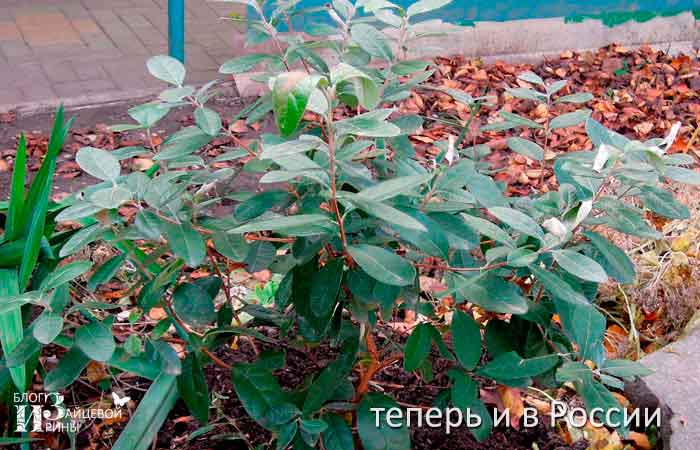

Outdoor cultivation
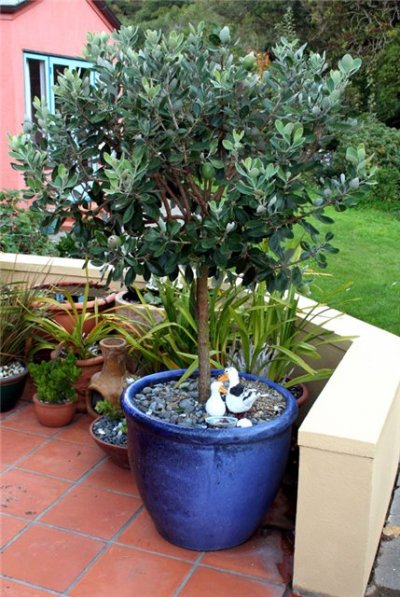

Akka can be a decoration for any garden or home. So how do you grow a feijoa in your garden?
Feijoa is appreciated for its aesthetic appearance, beautiful flowering and for tasty and healthy fruits.
When growing feijoa in the open field, you can form a plant with a bush and a tree.
Attention! Growing pineapple grass outdoors is only possible in warm climates. If the winters are cold in your area, you can plant an indoor feijoa.
The plant can withstand temperatures as low as –10. With more severe frost - Akka freezes to the root and begins to grow again in the spring.
If you want to decorate your garden with pineapple grass, and do not live in the Crimea or the Caucasus, you can “move” the bush to the winter garden for the winter.
These are the features of growing akka outdoors. How feijoa grows at home, read on.
Types and varieties of feijoa
For culinary use, tropical fruit varieties differ slightly from each other.
The first feijoa variety, which Europeans learned about, was brought from Brazil in 1890 by the French botanist Edouard André and planted on the Riviera. Seven years later, the first crop was harvested, and a year later E. André published his work describing the plant, hearths, flowers. In honor of the botanist, this variety was named - Andre. This variety is well known in the Mediterranean countries and California.
After that, in California, breeders bred three more varieties of feijoa, which became widespread:
- Choiseana is an early ripening variety with large dark green (up to 7 cm) fruits;
- Coolidge is a large-fruited variety;
- Superba is a round or pear-shaped fruit, very large (up to 80 g)
In South India, the Feijoa Besson variety grows, with small oval-shaped fruits that are soft to the touch. The peel of this variety is green with a burgundy or reddish tint.
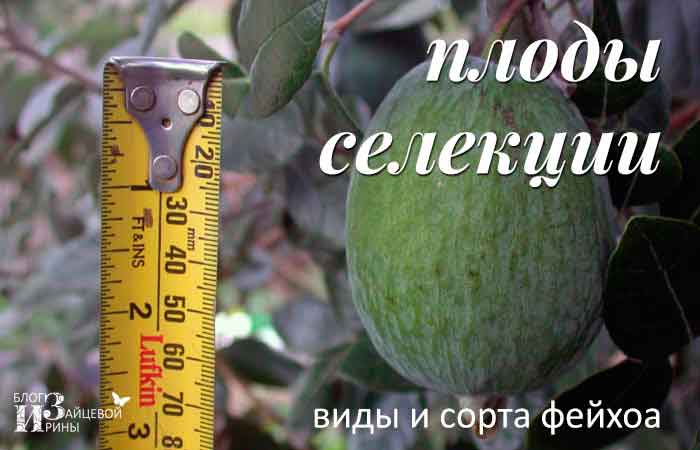

In our country, breeders have bred several varieties of feijoa:
- Nikitsky bumpy;
- Nikitsky fragrant;
- Light coloured;
- Crimean early;
- Firstborn.
What is the nutritional value
The main benefit of feijoa is the absence of cholesterol, saturated fat, sugar, and high content of vitamin C and aromatic essential oils.
Berries are used as an immunomodulator for the treatment of influenza, colds and viral diseases.
How many calories it contains
The calorie content of 100 g of berries is 55 kcal, of which:
- proteins - 0.98 g;
- fat - 0.6 g;
- carbohydrates - 13 g;
- fiber - 6.4 g;
- water - 86.6 g.
Among the carbohydrates in the fruit:
- sucrose - 2.93 g;
- fructose - 2.95 g;
- glucose - 2.32 g.
In addition, it belongs to alkaline foods that help balance the acidity level in the body.
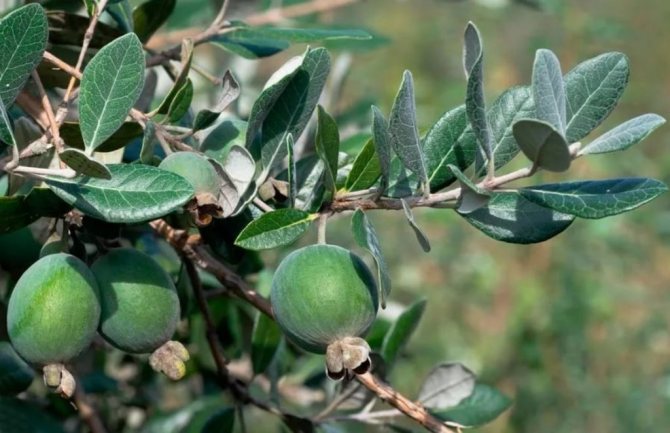

Fruits ripen in November
What are the features of the vitamin and mineral composition
Pineapple guava has a very diverse chemical composition, which is rich in fiber, vitamins, pectin, sucrose, micronutrients, phenolic compounds and biologically active elements.
| Chemical composition (per 100 g of berries) | Quantity, mg |
| Thiamin (vitamin B1) | 0,01 |
| Riboflavin (vitamin B2) | 0,02 |
| Pantothenic Acid (Vitamin B5) | 0,23 |
| Pyridoxine (vitamin B6) | 0,07 |
| Folic acid (vitamin B9) | 0,023 |
| Ascorbic acid (vitamin C) | 32,9 |
| Nicotinic acid (vitamin PP) | 0,46 |
| Phylloquinone (vitamin K) | 0,03 |
| Potassium | 172,0 |
| Silicon | 22,0 |
| Phosphorus | 19,0 |
| Calcium | 17,0 |
| Magnesium | 9,0 |
| Chlorine | 8,0 |
| Sulfur | 5,0 |
| Sodium | 3,0 |
| Iodine | 0,035 |
| Aluminum | 0,38 |
Quechua contains more iodine than seafood - 18.7% of the daily human intake. It should be borne in mind that only those fruits grown near the sea have such a percentage of the mineral content.
Feijoa. Sales season in Russia. Price
On the shelves of Russian stores and markets, feijoa appears from the Caucasus, where it was brought before the war. The sales season in Russia begins from October - November, as at this time the feijoa is actively bearing fruit. In Yaroslavl, I always try not to let the sales season of this amazing berry in the market. The beginning of October and the whole of December - you can always buy these berries on the market and in stores. Our price is now over 1 kg - 150 rubles. Sometimes it is more expensive. But not so long ago I bought it at this price.
Diseases and pests
There are several possible problems when growing feijoa:
Defeat by a false shield. Young plants are especially vulnerable, which may even lose their foliage. The best measure of control will be prevention - the leaves and stems are periodically washed with a solution of soap.
If pests do appear, they are manually shaken off the plant with a soft brush. And then the branches are treated with soapy water.The procedure is repeated once a week up to 5 times. The ground under the feijoa is covered to avoid soap getting into the soil. Or you can spray with a solution of karbofos: 5 g are diluted in 1 liter of water. Two procedures are often sufficient.
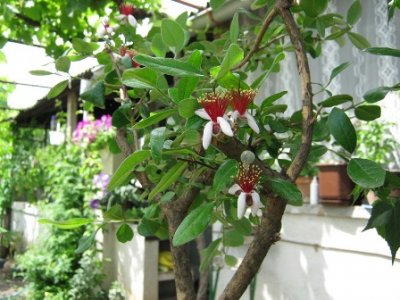

Red spider mite. Appears in conditions of low air humidity. Prevented by regular spraying of the plant.
Fungal diseases. Possible with waterlogged soil. Observance of the correct watering regimen will avoid illness.
In a garden, for the prevention of diseases and pests, spraying with 1% Bordeaux liquid is used.
Having grown feijoa at home, you will receive not only a beautiful ornamental plant, but also delicious, healthy fruits. Pineapple herb easy enough to care for. Decorate your winter garden with a new exotic piece.
How to choose a feijoa?
Before buying tropical fruits - remember that feijoa becomes useful when ripe. They are harvested unripe so that during transportation the fruits do not overripe and spoil.
If you buy feijoa, pay attention to the fruits and consider a few subtleties:
- fruits should be chosen those that are larger. They are the most helpful. I try to buy just such fruits, up to 10 cm in length;
- inspect the feijoa from all sides, it is necessary that the fetus has a whole, even skin without dents or damage. A good fruit is firm and firm to the touch. There should be no large dark spots. Small spots - there is nothing terrible here;
- if the fruit is hard, then most likely it is not ripe and can be left for several days at room temperature to ripen;
- if the fruit is soft when pressed, it means that the feijoa is already ripe and must be immediately used for food;
- ask the vendor to cut the feijoa and look at the color of the flesh. A good ripe fruit has a transparent flesh with a creamy shade. If the pulp is white, it means that the fruit is not yet ripe. If the pulp is brown, this means that the fruit is overripe and starts to deteriorate;
- overripe feijoa should not be bought, as the fermentation process will quickly begin in it;
- a ripe fruit has a rich dark green skin.
I suggest you watch a video in which an expert - Candidate of Agricultural Sciences Alexander Kulenkamp tells how to choose a high-quality ripe feijoa fruit, what to look for when buying.
What are the beneficial properties
Feijoa berries are capable of providing a preventive and therapeutic effect in pathologies:
- atherosclerosis;
- inflammation of the thyroid gland;
- avitaminosis;
- blockage of blood vessels;
- gastritis;
- acute and chronic diseases of the gastrointestinal tract;
- aggravated pyelonephritis.
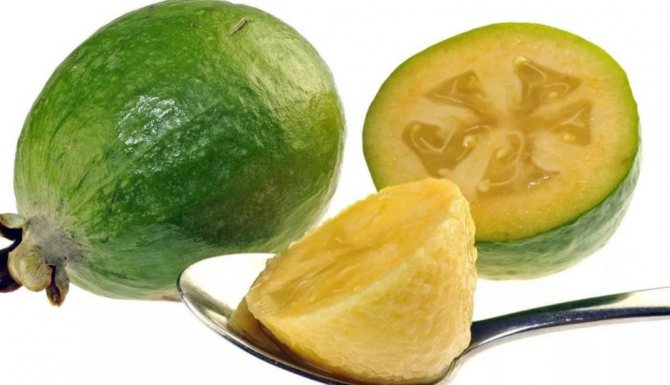

Ripe pulp is suitable for making ice cream and cocktails
For medicinal purposes, fresh fruits are used, crushed to a puree state, or prepared tinctures and decoctions.
Feijoa peel contains strong antioxidants - catechins and leukoanthocyanins. They stop the aging of the body and reduce the likelihood of developing cancer.
Women's health benefits
Quechua is a low-calorie product, so it can be consumed in the diet. It contains biologically active elements that accelerate metabolism and promote the rapid elimination of toxins from the body. Feijoa can complement any diet for women who want to lose weight quickly.
Scientists at the Frederick II University of Naples have proven that the substances contained in the berry take part in the fight against staphylococci and E. coli. Regular use of feihua leads to:
- lowering cholesterol levels;
- improving memory;
- increasing stress resistance;
- slowing down the aging process in the body;
- restoration of fat metabolism;
- elimination of depressive conditions.
The fruit helps to cope with anemia, Alzheimer's disease and hypertension.
Feijoa is a powerful antispasmodic for painful menstruation. Due to the accelerated metabolic process, it contributes to the rapid opening of the cervix.
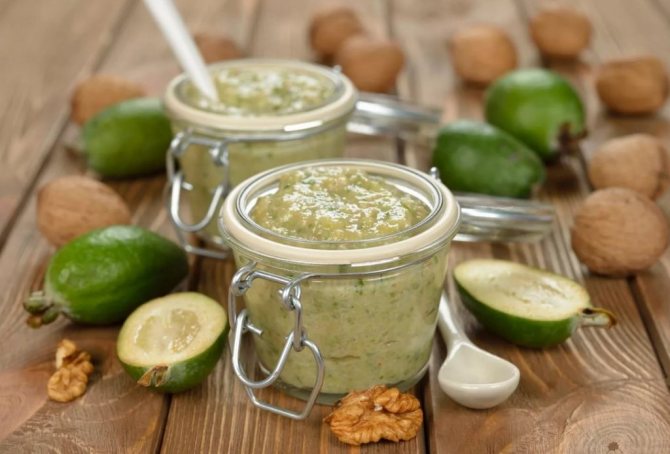

Jam with feijoa and walnuts
During pregnancy
The berry will help diversify the diet of a pregnant woman. It saturates the body with ascorbic acid and iodine. Its use is recommended from the 12th week, since during this period the active formation of important organs of the baby, in particular the thyroid gland, begins.
Folic acid contributes to the full development of the fetal circulatory system. Iron eliminates the symptoms of iron deficiency anemia in the expectant mother, especially in the third trimester of pregnancy. The daily intake of fruit for pregnant women is 2-3 fetuses.
To improve the skin of the face
The berry is used to prepare anti-aging and healing masks. Essential oils eliminate redness and dryness of the skin. Iodine strengthens the dermis, giving it elasticity and smoothness. Vitamins of group B and C help to improve skin color and also protect it from the influence of free radicals.
Skin rejuvenation mask
Such a remedy will help smooth out wrinkles and increase the elasticity of the skin.
Components:
- Feijoa pulp - 2 tablespoons
- Olive oil - 1 tsp
- Honey - 1 tsp
Step-by-step instruction:
- Mix all the elements of the recipe in a container.
- Apply the mixture to the skin in a thin layer.
- Withstand no more than 15 minutes.
Remove the mask with a dry cloth, and rinse off the remains with warm water.
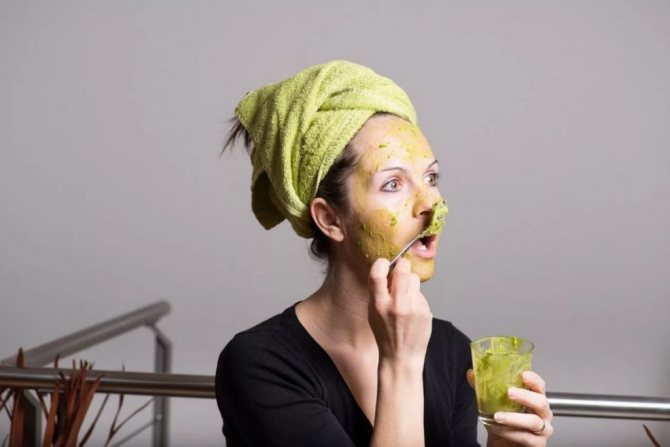

Universal face mask
It is designed for all skin types, providing a tightening and moisturizing effect.
Components:
- Feijoa pulp - 2 tablespoons
- Olive oil - 1 tsp
- Chicken egg - 1 pc.
What to do:
- In an enamel or glass container, mix all the ingredients until smooth.
- Using a wide brush, apply the mask to the skin of the face.
- Wash off with warm water after 15-20 minutes.
Before using cosmetic products at home, you should check for allergies.
Male health benefits
In adulthood, more than half of the world's working-age men suffer from prostatitis. Quechua can be consumed several fruits a day for prophylactic purposes to prevent the development of pathology. It will also help in hormone therapy, improving reproductive function.
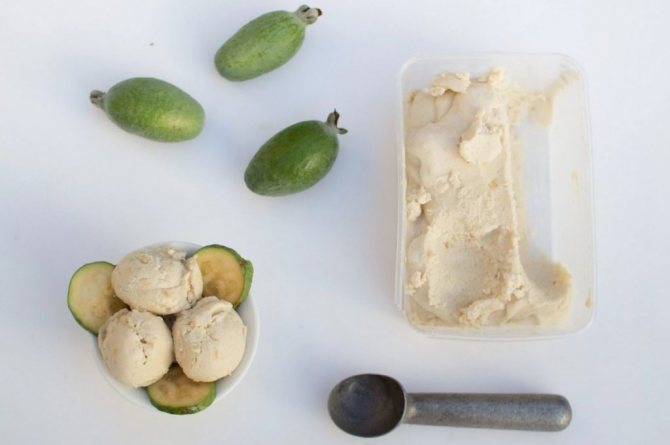

Ice Cream (foto from Pinterest)
What are the contraindications
Eat green berries with caution:
- children under 1 year old;
- diabetics;
- hypotension;
- allergy sufferers.
The recommended daily allowance for pineapple guava for an adult is no more than 2 fruits, for a child - 1 fruit. People with a pronounced problem of iodine deficiency can consume from 3 to 5 pieces per day. Exceeding this limit can lead to symptoms of diarrhea, as well as eating the fruit with dairy products.
How to store feijoa?
Store feijoa in the lower section of the refrigerator for vegetables and fruits for one to two weeks. In this compartment, the optimal storage temperature is created and other products are not saturated with the smell of fruit.
During storage, feijoa fruits lose a little moisture and only become sweeter. When purchased up to one kilogram, feijoa can be eaten fresh.
In an apartment, feijoa can be stored only if the fruits are not ripe.
For longer storage, the feijoa is best ground and mixed with sugar. In this form, it can be stored all winter in the refrigerator, while its useful and taste qualities are not lost. On the blog, I have already shared my universal recipe for health, as I personally have been making such a recipe for health for many years. You can read it here.


Benefits and possible contraindications
It is especially recommended for people who suffer from thyroid diseases and disorders of the digestive system. It is an excellent laxative and has a beneficial effect on the walls of the stomach and intestines.
Fiber and pectins normalize blood cholesterol levels and strengthen body cells. Natural antioxidants save the heart and blood vessels from overload, which allows you to control blood pressure in hypertensive patients.
Ascorbic acid protects against all kinds of viruses and colds, works great on the human immune system. Trace elements that feijoa contains can prevent inflammation of the prostate and improve hormonal levels in men.
Vitamin B5 can slow down the development of respiratory diseases, it is recommended to take it for chronic bronchitis, tuberculosis, etc.
Fact! Only 3-4 feijoa fruits a day include the necessary amount of iodine for an adult human body.
Feijoa is contraindicated for people who have an excess of iodine in the body, when used, they are threatened with nausea, vomiting and dizziness. It is also not recommended for those who suffer from high acidity. In terms of composition, it is on the same level as citrus fruits, therefore it can cause allergies.
Feijoa growing temperature
Optimum temperature for growing
in the room - 18-20 ° С, but in winter it is desirable to maintain 12-14 ° С. Regular moistening of the soil is required, since overdrying of the earthen coma leads to loss of leaves, drying of branches and part of the root system. At low air humidity, feijoa is sprayed with lukewarm water.
In summer
the plant can be taken out into the open air. Feijoa is a well-pollinated crop (there are self-fertile varieties); in the open air, pollination occurs with the help of insects. Feijoa leaves live for 1.5-2 years. Flowers and fruits are formed on the shoots of the current year. To increase the percentage, the ovaries are manually pollinated and sprayed with clean water in the evening.
Feijoa - thyroid gland treatment. Recipes
The amount of iodine in feijoa is the same as in seafood. But it all depends on the place where the shrub grows. If the fruits are used to treat a certain disease, before that you need to find out how much of it is contained in the purchased product. For prevention purposes, fruits from any shrub are suitable. This does not include just the treatment of thyroid disease.
The thyroid gland responds well to treatment with feijoa. Useful properties and recipes read further in the article:
- Pass a kilogram of sugar and feijoa fruits through a meat grinder, insist until the sugar dissolves. Take a tablespoon of the mixture in the morning and at bedtime for ten days. After a ten-day break, repeat the treatment.
- For diseases of the thyroid gland, eat about 300 g of fresh fruit every day. The course is three weeks. In winter, when there is no fresh feijoa, you can drink a dry infusion (pour 3 tablespoons of raw materials with two glasses of boiling water, insist in a thermos for a day). The next day, drink the contents in three doses of 0.5 tbsp. half an hour before eating.
- You can do it easier: cut the fruit in half, scoop the fragrant contents with a teaspoon and eat it, inhaling the healing odors.
- Cockle grass and dry feijoa fruits, taken in equal parts, pour a glass of boiling water and boil for 10 minutes. Drink 100 ml of medicine before meals three times a day.
- In this recipe, feijoa shows useful properties (reviews confirm) very clearly. It includes 200 g of shelled walnuts, 500 g of fresh feijoa fruits and 200 g of liquid honey. The medicinal mixture is taken in a tablespoon 3 times a day, always before meals.
Chemical composition
Berries contain a lot of water and carbohydrates, and the proportion of proteins and fats is negligible. According to the Official Directory of the United States Department of Agriculture, 100 grams of fruit contains 32.9 mg of ascorbic acid. This is almost the same as in lemon.
Berries are rich in vitamins B, K, PP, biotin. Of the macronutrients, I will note potassium, phosphorus, magnesium.
Many sources claim that feijoa contains more iodine than fish. This is not entirely true.The seaweed is 125 times ahead of the berry in question, and the cod is 6.7 times ahead.
The iodine content in feijoa is 20 mcg for every 100 grams, and in seaweed - 2500 mcg. Feel the difference. For comparison, an iodomarin tablet is 150 mcg.
Another popular opinion, which I sometimes hear from doctors that feijoa cannot be eaten with AIT, will also question a big question. I think that some 20 mcg will not create an excess of the element in my body, and I am not going to deny myself the pleasure.
Berries are rich in sugars (5-10%), organic acids, pectins, selenium, potassium and silicon.
Not iodine, but silicon - the undisputed leader in the composition. The content of this element in 100 g is much higher than iodine, and amounts to 43.3% of the daily value. This is important for good looks and overall health. After all, Si has a beneficial effect on all organs: from nails to the immune system.
Care
At the end of winter, the shrub is cut off by 40%; in the spring, young shoots begin to grow actively. Correct crown formation is very important. Young seedlings up to 30 cm in height must be cut by 1/3 to form the main shoots. The following winter, each branch is cut 50-60%. If shoots begin to grow at the root collar, they are also cut off, it is also necessary to remove dry and weak branches.
The plant loves moisture; in the summer, feijoa should be watered often and abundantly. When the soil dries up, the plant can shed all the leaves. When watering, the water should flow from the drainage holes into the sump, you do not need to drain it, it will gradually be absorbed into the soil. In winter, feijoa is watered sparingly.
Use during pregnancy
For the expectant mother, feijoa is considered beneficial, causing a number of effects:
- Strengthening immunobiological reactions, which is important in the season of respiratory diseases.
- A source of folic acid, which is essential for blood formation and fetal formation.
- Elimination of toxins from the body.
- Stabilization of the digestive system, prevention of constipation.
- Normalization of blood pressure (decrease), strengthening of the myocardium (due to potassium).
- Balance the hormonal sphere.
Feijoa is allowed for pregnant women in the second trimester, when the baby's nervous system and thyroid gland are formed. The constant intake of iodine will provide the child with innate immunity. It is important not to overdo it with valuable halogen, because an excess of it is no less dangerous than a deficiency. Folic acid will prevent developmental defects in the embryo. The vitamin reserve of the pregnant woman will be replenished with 2-3 fruits per week.
During breastfeeding, berries are included in the mother's diet when the child is a little over 3 months old. The fruit is not allergenic, but it is better to start with a small piece of feijoa. In the absence of rash, increase the dose to ½, later switch to regular, but moderate use. Due to the high content of pectins, intestinal motility will improve, which is important for the postpartum period, when hemorrhoids and microtrauma interfere with normal bowel movements. Ascorbic acid relieves existing inflammation.
Trade
The sales season for Feijoa in Russia starts in mid-late autumn. The main supplier is Abkhazia and the Krasnodar Territory. The fruits are sold for a short time, due to the short shelf life - one to two weeks from the date of harvesting. For successful transportation, the fruits are harvested immature. Thus, they are less susceptible to damage and rotting, so after purchase, if you notice that the fruits are hard enough, you should store them at room temperature (a week or two) until they soften a little, and then place them in the refrigerator on a shelf for fresh fruits and vegetables. ...
For lovers of growing various plants at home, we recommend that you familiarize yourself with useful tips for keeping Feijoa at home
And now to something more interesting (I wanted to say tasty):
Growing in the country
Feijoa can be easily grown on its own, it is important to comply with some requirements.The shrub thrives on any soil, even stony and sandy. Reproduction is possible by cuttings and seeds. The most favorable time for planting is February - early March.
Seed planting is carried out in several stages:
- the seeds must be extracted from a well-ripe fruit. Gently cut the berry and remove the pulp, rinse and dry the seeds;
- prepare a soil from leafy earth, high peat and river sand in a ratio of 2 to 2 to 1;
- plant the seeds in the ground to a depth of 0.5 cm and sprinkle with a little earth. Cover the container or pot with glass and place the sprout in a warm place where the temperature should be 22-25 degrees. Moisten the soil and ventilate the planting every day. Place fluorescent lamps above the pots. After 1-2 months, shoots should appear, when they sprout, transplant them into separate pots.
Propagation by cuttings:
- in the fall, cut 10 cm long cuttings from a young plant, remove all leaves except the top two. This is necessary for faster root formation;
- plant the cuttings 2/3 in the ground and place in a small greenhouse from a plastic bag, provide good lighting;
- after 4-5 weeks, young leaves should appear.
Feijoa is very fond of light, so choose a suitable place for it. If there is little light in the room, use fluorescent lamps. Protect the plant from direct sunlight.
It is important to know that not every variety, when grown indoors, will bear fruit in the future. There are self-pollinating varieties (Nikitsky aromatic, Coolidge, Crimean early) and non-self-pollinating. If your plant belongs to the latter, you need to grow two bushes and pollinate them yourself, using a brush, transferring pollen from one plant to another.


Feijoa bloom, how many times a year
What does mint look like - varieties and names
It is important to know how feijoa blooms - caring for this shrub is highly dependent on the stage of the life cycle.
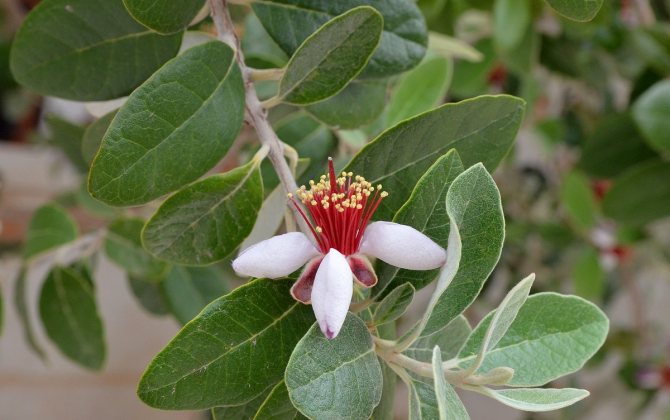

Feijoa flower
Feijoa bloom begins in the last month of spring and lasts about three weeks. The flowers of this plant are pale pink, the size of a five-ruble coin. They can be either single or combined into small inflorescences. Each flower consists of four petals and a large number of stamens, painted in a contrasting red color. The period when feijoa ripens begins in autumn, closer to winter.
Interesting! Feijoa flowers have a sweet taste and can be used in dishes such as salads.
Transfer
The first 2-3 years, the plant must be transplanted annually using a mixture of peat and sand in a ratio of 2 to 1. After 3 years, the transplant is carried out 1 time in 3 years. The soil should be made of sand, humus and turf in equal proportions. You can use the transshipment transfer method. The branches of young plants are very fragile, so it is important to do everything carefully. With each transplant, the pot should be 10 cm larger.Plants made of wood and clay pots are ideal for feijoa. Metal containers are not suitable as they tend to oxidize. The plant must be regularly sprayed and maintained at the correct temperature.


Feijoa tree care
Look at the photo of indoor greenhouses - healthy feijoa trees decorate the home garden. The culture grows well and bears fruit in the apartment when the plants are provided with certain conditions:
A light-loving culture requires good lighting. Akka zellova perfectly develops on windows with south and southeast orientation.
Advice! In winter, the plants must be provided with maximum illumination, if necessary, supplemented with photo lamps.
With insufficient lighting, the tree quickly begins to shed its leaves, the consequences of such stress cannot be quickly overcome.
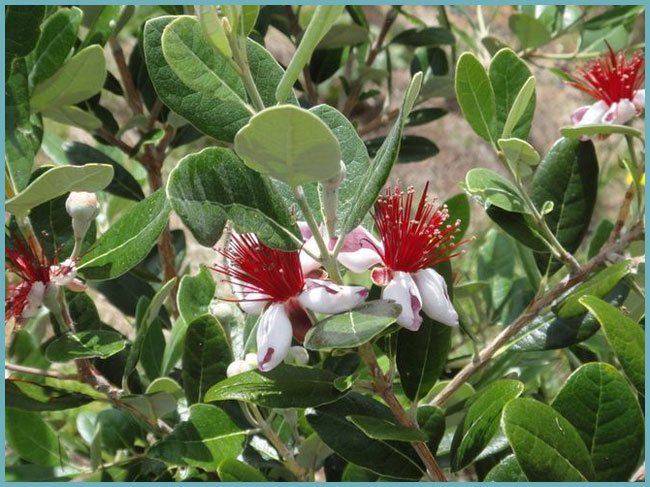

Feijoa bloom
A pot with a plant must be shed well periodically - even a slight overdrying of an earthen coma can lead to the death of the root system, leaf fall.
Advice! It is most convenient to water the tree from above, while watering until water appears in the pan. The water from the trays should not be poured; the plant will quickly absorb it through the drainage hole.
Excellent results are obtained by spraying feijoa on the leaves, it is especially important to bathe the crown of the tree in the dry summer months.
Crown formation
To give the seedling a neat shape, when it reaches a height of 30 cm, the trunk is trimmed. You need to cut it off by about one third of the total length. When the side branches grow back, they are also cut off by one third. It is better to do this at the very beginning of spring, before the plant throws out the buds. In the future, only dry branches should be cut, if they appear.
It must be remembered that cultivation should be carried out in a sufficiently lit room. Otherwise, the shrub loses its beautiful shape and becomes too elongated.
Feijoa recipes for treating diseases
Further we will talk about feijoa, useful properties and recipes for the treatment of some diseases of which are not known to everyone. The fruit is endowed with the ability to cleanse blood vessels and is used for atherosclerosis, and also improves memory. It is possible, without waiting for exacerbations of cardiovascular diseases, to take preventive measures using the plant. Why feijoa is useful has already been mentioned earlier. In order to prevent heart disease, you can drink once a day 50 g of water with 1 tbsp. spoon of feijoa juice. In case of depression and stress, eat 3 fruits a day regularly.
For people with jaundice or nephritis, tea made from the leaves of a medicinal bush is suitable. Insist one tablespoon of leaves in a glass of boiling water for 30 minutes. Drink twice a day.
Calorie content
Feijoa does not differ in excess calories, although the carbohydrate content is quite high. The calorie content of feyokha does not exceed 49 kcal / 100g of the product. The paradox is that with a low energy value, fruits contain a significant percentage of sugars and fiber.
The glycemic index of feijoa is 40. Recall that GI is the rate of absorption of carbohydrates, due to saturation with which the level of sugar in the blood rises. On the scale - 100 units, where 0 is a carbohydrate-free product, 100 is a product containing the maximum amount of carbohydrates. The GI of an exotic fruit is close to the average, which indicates the presence of "fast" sugars, which, once in the bloodstream, are actively absorbed by the body.
Note: A high GI value leads to an increase in blood sugar%, disrupts metabolic processes. Due to this, there is a rapid deposition of fat in problem areas and at the same time a person experiences a constant feeling of hunger.

